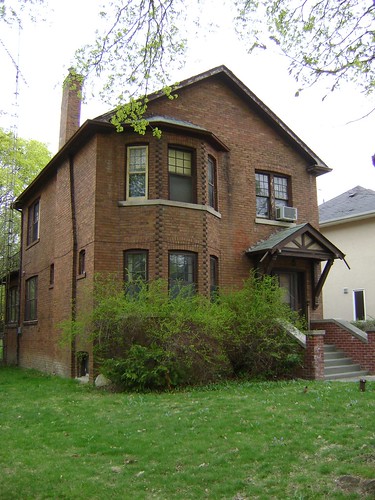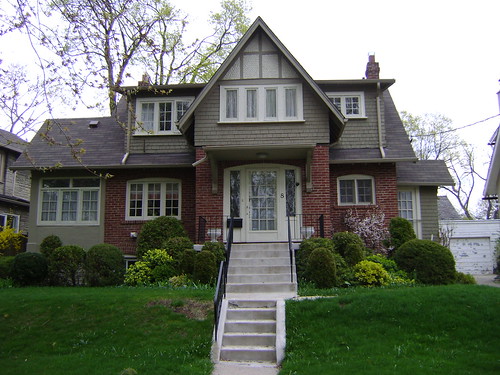The Heritage of Lawrence Park
“Lawrence Park” was named after John Lawrence and his family, who were one of the original landowners in the North Toronto region. John Lawrence and his wife, Sarah, were one of the few families living there in 1865. They owned Lot 5, which was a 190 acre property.

Aerial view of Lawrence Park in the 1930's. Photo credits: Toronto Archives
With its prime location along Yonge Street and the proximity to the expanding and prosperous Toronto, speculators became interested in buying the farmlands. Just a bit south, on Eglinton, farms where already being subdivided for urban development. Lawrence Park met the same faith in 1907 when the Dovercourt Land Building and Saving Company began the assembly of what will become the neighbourhood we know today. Under the supervision of Wilfred Servington Dinnick, the company acquired most farm lots and started to develop a suburb for the “well to do”. Dinnick’s vision was to create a “garden suburb”, similar to what was being done in England at the time.
A wood bridge crossing the ravine in 1920. Photo credits: Toronto Archives
The nascent district had some challenges in its early days. Because of two wars, a recession and a depression, the building of houses was interrupted. It’s only in the 1950s that Lawrence Park was completely built up.

The construction of the Fire Hall took 2 years, from 1930 to 1932. Photo credits: Toronto Archives
Navigating the area
The limits of Lawrence Park could vary depending on the map you look at. Some call portions of Bedford Park “Lawrence Park North”, while a good chunk of Lytton Park is added to the actual Lawrence Park to create “Lawrence Park South”. No matter the sources, the original neighbourhood is bound by Yonge Street to the west, Bayview Avenue to the east, Blythwood Ravine on the south and Lawrence Avenue on the north.
The area grew around Mount Pleasant Road, and is composed of tortuous streets and deep but narrow lots. Up until the 1970’s, a streetcar was running in the neighbourhood, but that changed when the Lawrence subway station opened.
Home and front garden of M. Irwin in the 1930's. Photo credits: Toronto archives
Attractions
On top of being a very exclusive residential area with numerous hills, mature trees and sidewalk-free roads, Lawrence Park is a very different place to live. In the urban planning process, it was decided to keep all retail and public services on the periphery of the district. The positive result behind this thinking is an almost traffic free garden suburb. To fully experience this “quietness”, discovering the Alexander Muir Park on a romantic scenic walk would be a good starting point.
Architecture
Dinnick’s vision is still palpable nowadays, even though there is a greater variety of architectural styles. On the same street, you can see an English cottage next to a Tudor Revival. The majority of the residences where build before the 1940’s, which explain the historic feeling you get when you walk the streets.
This house at 57 Glengowan is still standing intact nowadays. Photo credits: Toronto archives
Some homeowners prefer to rebuilt new residences in place of the original houses they purchased. Photo credits: Eric Pellerin
This house will either be restored or destroyed by the next owners. Photo credits: Eric Pellerin
Many well known Torontonians lived in Lawrence Park. This house was first occupied in 1923 by a Thomas F. Young, of the Sterling Bond Corporation. The new owners preserved many of the original features of the house. Photo credits: Eric Pellerin




















































